Mega Man 2 is The Best - Mega Man Monthly (FINAL)
Saved The Best for last
Hyperbole invades talk about games constantly. Every game seems to define genres, be a masterpiece, or ruin lives as the worst thing ever made. I admire the enthusiasm, but am physically incapable of mustering it myself. If I write something then it needs to be what I honestly think, and I think that if we’re being honest, very few games actually live up to those descriptors. I can’t give you dramatized sales-pitches or disingenuous rants. I’d rather just give you my honest assessment of whatever the topic of the day happens to be; anything less than that would be a disservice to anyone who bothers to read what I write.
Mega Man 2 is the best. I don’t consider that statement hyperbole. You are free to disagree with me, you always are, but I am hopeful that you’ll at least hear (or read) me out. Whenever I thought about what would be the most important thing to cover in a monthly Mega Man series, I inevitably kept coming back to Mega Man 2. Frankly, when it comes to why I write about games at all, it always comes back to Mega Man 2. I figured, basically from the start of this monthly endeavor, why not explore that?
For this final installment of Mega Man Monthly, we’ll discuss this landmark Mega Man: what it is, what it means to be “The Best”, and why Mega Man 2 can claim such a crown. Mega Man 2 is one of those genre-defining masterpieces you’ve heard so much about, so it’s only appropriate for an article about to be all-encompassing in scope.
What is Mega Man 2?
Mega Man 2 is the sequel to Mega Man. Aren’t you glad you read this article? Don’t worry, the statement means more than it may first appear.
Sequels imply success. Common sense dictates that success breeds success – if something does well, a follow-up will similarly do well if not better. Mega Man succeeded, so Mega Man 2 came to be. Simple enough, except for the fact that Mega Man was not actually a success, at least not enough of one. When the time came to think about a sequel to Mega Man, the suits at Capcom showed little interest. Accounts from those involved reveal Mega Man sold tepidly, landing it more in the realm of a sleeper hit than a breakout success. Capcom deemed Mega Man unworthy of following up based on finances alone.
Despite this, the planner behind Mega Man, Akira Kitamura, fought for the opportunity to make a sequel. He strongly believed in the Mega Man concept from the start, as he would later confess:
“The truth is, after we made the first Mega Man, I knew right away that this would become a series. The gameplay system was really well done, and I felt that it would be easy for another developer or team [to] make a sequel and keep that high level of quality. “ -Akira Kitamura via an interview with Hitoshi Ariga
Perhaps due to his infectious enthusiasm for Mega Man or perhaps because they simply wanted to see him fail, the higher ups gave Mr. Kitamura the opportunity to proceed with a sequel. The catch: he would only get about three months to assemble a team and work on it – a staggeringly small amount of time even by the standards of the era.
It should not be understated that time crunches and the resulting overwork occur often in the gaming industry. Horror stories regularly emerge from both the past and present of people essentially living in their office to get their games out the door. I’m not condoning or trying to glorify this kind of environment. However, the fact remains that people literally poured their lives into their work. Even if made under awful conditions, respect should still be given to the results of their efforts and passion, particularly in circumstances like Mega Man 2.
Among the many games created under conditions like these, Mega Man 2 stands in a unique position. By all accounts, the higher ups at Capcom had no interest in Mega Man. They did not actively seek its production and they did nothing to encourage the team making it. They simply allowed for it to happen. These circumstances make Mega Man 2 one of the few sequels that you can safely call a pure passion project. No corporate mandates led to its existence and no fame or fortune was actively sought. In fact, Mr. Kitamura didn’t even stick around to enjoy Mega Man’s success after 2 was released.
Passion aside, Mega Man 2 should have been a mess. Resources and time were limited. By Mr. Kitamura’s own admission, they barely even playtested the game. Given this recipe for disaster, it’s a miracle that it produced something so critically acclaimed.
This miracle was not accidental or due to luck. A big reason the game turned out so well was because Mr. Kitamura and the team went into the project with clear intent and ambitions.
Mega Man 1 was a result of careful, critical thought about game design. Due to the meticulous nature of the game’s programmer, Nobuyuki Matsushima, Mega Man became a slow-paced, thoughtful type of platformer that asked for a more calculated approach from the player than its contemporaries. Mega Man could not rely on flashy action or impressive graphics – the design of the gameplay had to be what made it stand out.
The effort clearly showed in the original Mega Man, but even Mr. Kitamura admits the seeds of his research only began to blossom about halfway through the project. With Mega Man 2, he had the opportunity to fully utilize everything he had learned from the start. The end result carries with it not only lessons from its colleagues, but also from the pitfalls of its immediate predecessor. Difficulty had been rethought, the game expanded in scope, and the game featured many impactful “set piece” moments that far surpassed the original. Despite the time crunch, despite the lack of support, despite everything, Mega Man 2 far surpassed the original and thoroughly realized everything it aimed to accomplish.
Take it from someone who does a fair bit of writing: sometimes when you know exactly what you want to do and feel the drive to make it happen, everything just falls into place. You don’t always need thorough proofreading or playtesting to put out a quality product. Passion overpowers any typos or bugs! More time for editing never hurts, of course, but there’s also a rawness to these endeavors that can add some charm as well.
Mega Man 2 transcended the original in more than just a game design sense. The team worked hard not only to make the game itself better, but also to ensure that this time around, it would find its audience. They concocted various tactics to draw people into Mega Man’s world: they fleshed out plot elements in advertisements and instruction manuals, and they even established the most important marketing gimmick the series ever had.
Boss characters in Mega Man establish each game’s identity, and Mega Man 2’s boss design contest made the fans a vital part of Mega Man’s identity as well. Due to the time constraints, the developers had to cheat a little by picking the general themes ahead of time and only using bosses that fit the pre-established template, but the idea remained intact. By reaching a hand out to the wider public, Mega Man 2 set the important precedent that this is a series where the fans matter. Fans helped give this game life, and Mega Man fans continue to give the series life to this day.
That one likely spur-of-the-moment decision to hold a boss design contest opened countless doors for the series. Even if people never actually entered the contests themselves, the very idea that they existed got people to imagine the possibilities, it got them to draw the characters, and it inspired them to be creative with the Mega Man concept. These little hooks directly conveyed the appeal of Mega Man, both as a character and as a game. The infinite potential that Mega Man and his universe represents allowed the series to expand into sequels, branch into subseries, spin-off to other media, and most importantly, stay alive in people’s hearts. When it comes to Mega Man, for many fans including myself, it’s personal. I very much doubt that the Mega Man fandom would have weathered through so many dry spells if they were not given the keys to be a part of Mega Man so early on.
So, what is Mega Man 2? It’s the sequel to Mega Man. A sequel that would not have happened if not for passion. Mega Man 2 is passion incarnate. The passion from the staff led them to get the game off the ground and surpass the original in every way, passion from the fans injected the game with an extra spark of life, and the game itself fueled a passion that has kept the series going for over 30 years.
The many small decisions mixed with an overabundance of passion created a ripple effect. This game affected more than just Mega Man or Capcom’s bottom line. It affected peoples’ lives and how people design games – you still see level design in platformers today that borrow from Mr. Kitamura’s bag of game design tricks. I suspect that the Mega Man 2 project had an especially big impact on Mr. Keiji Inafune, an at-the-time fledgling artist who would go on to become a major bigshot at Capcom and continue to shepherd Mega Man into the future long after Mr. Kitamura departed.
With all of that said, a literal life-changing game must at least be in the running for the title of “The Best”, right?
On Being “The Best”
Time for an intermission on what it means to be “The Best.” It’s a surprisingly difficult question to answer, so it’s no surprise that people eagerly outsource the answer.
We live in the age of Metacritic and “The Game Awards.” These arbiters of quality pit the entirety of video games against each other into a meat grinder of objectivity. Only the best of “The Best” survive, at least theoretically. The idea here is that the higher your conglomerate score or the more awards you win, the closer you are to “The Best.” If you win Game of the Year at “The Game Awards” you must truly be “The Best.” No one specifically said these were the rules of life, yet you’ll frequently see people waving metascores and awards around as though they prove the quality of their favorite games, so let’s roll with that idea.
It sounds nice to be able to rely on some higher power to determine the quality of video games, especially if the determination reinforces your opinion. Unfortunately, these deities are not quite what they seem. The usefulness of “The Game Awards” and metascores in determining objective quality do not hold up under scrutiny, so let’s scrutinize.
For instance, what is the actual criteria that a game needs to meet to get a high metascore or win awards? It’s not like you can just stuff your game full of more graphics and gameplays than your competition. How do you measure the overall goodness of a game? If these metascores represent an objective metric, surely there must be some commonalities between high scorers or a formula to follow to ensure your game makes the cut.
Taking a look at this year’s hits you might think that the game needs to be from a well-known developer, star a recognizable character, have a lot of money put into it, or feature a large world to explore. Yet plenty of games meet all of those criteria and have fallen short. If we’re being honest, I think that the only truly objective criteria for guaranteeing a top spot in the gaming hierarchy is to be a brand new mainline Mario or Zelda game. Anything else and you’re taking a gamble!
In this industry, what scores in the high 90s or becomes a game of the year contender can be difficult to determine. People just seem to know it when they see it, or at least they know it when a marketing cycle tells them to see it. Which brings us to another issue: people can only evaluate what they actually know about.
By crowning something as “Game of the Year” you’re essentially saying that you’ve compared your pick with everything else that was released that year and determined it is “The Best.” Maybe not you personally, but certainly that’s the underlying goal of something like “The Game Awards” which relies on panels of judges to pick the nominees and winners. This process attempts to capture as much knowledge and experience about the gaming landscape that year as possible to give their awards some credibility.
How credible can any critic actually be when it comes to a subject like this, though? I can guarantee you that no one voting in “The Game Awards”, including the public at large, played and evaluated absolutely everything that came out this year. Even if you had all the time in the world, tastes will differ and knowledge on what’s available varies. Just because you play something doesn’t mean you understand its appeal, either, which would be a vital component in determining its quality in relation to everything else. We’re simply not built to look at things the same way as absolutely everyone else.
To take things a step further, I can also guarantee you that no one has played every video game ever. Yet by scoring a game an 6.25 out of 10 and having that factor into a greater metascore, you’re essentially saying that’s where Metroid Party IV: Sylux’s Revenge fits in the overall pantheon of gaming. I didn’t like the Kraid foot massage game either, but who are you to say such a thing? You probably didn’t even play Federation Force, let alone every other game ever made!
That’s not even getting into how inherently ridiculous it is to be comparing games like The Last of Us to Super Mario Galaxy, as if they can be coherently compared at all. For some companies “fun” is a dirty word, while for others it’s the entire point. How can anyone in good faith say that such philosophically different works are competing or that one is “better” than the other? Better at what? When you wage war between diametrically opposed projects like these, the whole exercise starts to become silly.
Truthfully, everyone involved with determining “The Best” video game lacks the qualifications to do so. The critics aren’t qualified, you’re not qualified, and I’m not qualified. These award shows and aggregate scores don’t actually mean anything beyond showing that a handful of games were popular with a specific sampling of people at a certain point in time. When you try to extrapolate these accolades beyond that context, you start reaching so hard that you might as well be playing ARMS.
I’m not trying to take anyone’s gamer license away. I understand that some people like the award shows and others appreciate having some kind of shorthand to assessing a game even if the actual validity may be questionable. I’m simply pointing out that the process of selecting “The Best” is more personal than we may care to admit. We can only evaluate things based on what we know and what we care about, and leaving that decision up to others, no matter how many, runs into the exact same problem. A game’s true value lies in what it aims to accomplish and how much you personally appreciate that. That’s the only honest way to determine what’s best.
Subsequent games also don’t take away from what a game accomplishes, even ones in the same series. If you disagree with my opinion on Mega Man 2, one of the counterpoints that likely immediately sprung out of your mind is that it’s old. Subsequent Mega Man games added things like sliding, charge shots, dashes, armors, better graphics, and all kinds of other things you enjoy. Mega Man evolved, so 2 is outdated.
Perhaps the biggest misconception in gaming is the idea that evolution is linear and therefore automatically an improvement. Not how that works for video games or really anything! Evolution means things change; it doesn’t necessarily mean that things improve. If you don’t believe me, let’s use a relatively small example that everyone can relate to, like, say, the entire course of human history. People today benefit from the development of technology, which allows us to do all kinds of things that our ancestors could scarcely imagine. At the same time, technology shifts our focus away from skills people needed to develop in the past.If you compare the average office worker of the present to the hunter-gatherers of yesteryear, it would be disingenuous at best to say it’s a 100% improvement.
For both humans and games, being products of their time and limitations provides a unique appeal that is impossible to recreate with an evolved mindset or tools. It’s the same thing with remakes: you can change the graphics or the gameplay of a game, but you’re not replacing the original. You’re simply using something as a base to make something new while under entirely different circumstances.
As I detailed in the first section of the article, Mega Man 2 is the product of particularly interesting circumstances. It offers numerous points of charm that could only result from the time period and limitations that were imposed on its development. No other Mega Man could recreate or especially replace the kind of game Mega Man 2 is, and I wouldn’t want them to. They should similarly be their own thing! For me, Mega Man 2 represents everything that I love about games, so it will always be “The Best.”
Why Mega Man 2 is The Best
It makes sense to point to Mega Man 2 specifically as the best one simply because it had the most impact on everything that came after it. Mega Man 1 may have started the series, but Mega Man 2 saved it from an untimely death by catapulting it into the public consciousness. You can see traces of Mega Man 2’s game design, audio design, and visual design all throughout games in the ensuing decades after its release. Although I can appreciate the influence argument, it’s not something I evaluate games on. Influence can result from quality, but it does not directly prove it. Imitation may be the sincerest form of flattery, but you just need to look at trends like “gacha” or “service” games to see that copycats don’t always latch onto something because they’re high quality ideas.
Mega Man 2 undoubtedly establishes a lot of conventions that live on in other games to this day, that’s just not all it does. To me, the things that differentiate Mega Man 2 from other games, including its own sequels, are just as important as the things it popularized. These differences are what make it the best. The tight time frame it was made in, the desperate fight to get it made, and the passion of the team involved all contributed to making a game that is impossible to recreate or usurp.
When I described what Mega Man 2 is, I tossed out a lot of developer trivia and insight that you could only get from outside material like interviews. Sources like these support my view of the game, but you don’t actually need any of them to come to the same conclusion. You can experience the passion behind Mega Man 2 from the moment you turn the game on.
The opening scene summarizes all the effort and care into making it the best game it could be. Immediately it establishes the perfect tone: the plot fades in and out beneath a lonely city at night while the ending theme from the original game plays. The music directly picks up where the first game left off, yet by juxtaposing this previously triumphant song with the current backdrop, it recontextualizes it from an “ending” theme to a “calm before the storm” theme. Eventually the theme escalates…we gradually ascend to the top of the building in front of us…and then…we see him. A helmetless Mega Man stands alone with his hair blowing in the wind as a more action-packed theme kicks in and the title drops. It’s the coolest way to open a game like this imaginable.
Modern players often discard the stories in older games due to the limited means in which they are told. In some cases the story may have been an afterthought, but that’s not the case for Mega Man. The story here isn’t about beating up an evil mad scientist, it’s about a lonely robot carrying the emotions and hopes of humanity alongside him in his never-ending battle. A beating heart lies beneath his steel exterior, and images like him standing on the rooftop or leaving his helmet on a grassy field in the ending convey that. One powerful image or moment can be just as impactful as a “cinematic” adventure game or expansive RPG, and Mega Man 2 offers plenty of examples.
Each level features elements that leave a lasting impression. The disappearing blocks across the giant gap in Heat Man’s stage, the slippery crystalline nature of Flash Man’s lair, the instant death Quick Man lasers…there are countless examples of the game being purposefully designed to make a mark on the player. Many enemies seem specifically crafted to be dramatically large and memorable, like the dogs in Wood Man’s stage or the shrimp-spewing fish blobs in Bubble Man’s stage. Even just little details help sell the scale of a level, like how the background in Crash Man’s stage goes from day to night to space the further up you climb.
Often, the visuals, game design, and music all work in tandem to create truly unforgettable sequences. Just about every Mega Man fan has to have the first Wily stage burned into their brain: trekking across an open field while avoiding Wily’s defenses and eventually scaling the tower, creating your own path upwards with the Item powers. It’s a whirlwind of everything that makes Mega Man compelling: amazing music, overwhelming forces that must be carefully navigated through, and a challenge requiring you to use the many tools in your arsenal to emerge victorious.
Put simply, Mega Man 2 feels deliberately crafted with a thorough attention to detail and passion that no other game matches. Mega Man 2 isn’t just good thanks to its game design, it combines that design with every other part of it to create something that transcends beyond just a game. Every song, every challenge, every element of the art exists to convey specific emotions and details. This is evident from the game itself and further confirmed by the people who worked on it. You can feel Mr. Kitamura’s unique touches in particular all over this game: his approach to game design and his vision of Mega Man’s world shine In that way, Mega Man 2 not only laid the foundation for what Mega Man could be, it executed it in an easily distinguishable way.
Mega Man 2 isn’t perfect. I wouldn’t have it any other way. Mega Man 2 does not need to be perfect to be the best; being perfect might actually disqualify it entirely.
So often people seem to seek perfection when it comes to things they love, yet I think that’s the wrong attitude. If you treat the absence of flaws as a prerequisite for love, you’ll never be happy because everyone and everything has flaws. If you actually think something’s perfect, you’re not looking hard enough, which may be its own problem. You have to see things honestly in order to actually love them, anything less than that is delusion.
To put it another way, flaws are a matter of perspective. Love is not about ignoring flaws, it’s about recognizing their merits and how much they matter. While some may dislike specific parts of something, others may find those same things appealing or at least tolerable. So Mega Man 2 may have flaws, sure, but there’s things worth appreciating about those flaws just the same as what it does right.
For example, a common complaint I see is that Mega Man 2 is unbalanced. As we know, the developers didn’t have much time for playtesting, so that makes sense. Interestingly, however, I’ve seen this complaint go both ways. Mega Man 2 is too easy and also too unfair. Both claims have some truth to them, and at the same time, neither are exactly what they seem.
First order of business, let’s discuss the idea of “game balance.” Conventional wisdom seems to imply that a well balanced game should consistently challenge the player. In my experience, that typically results in an annoying game rather than a fun one. Rather than keeping a player challenged, a game should instead aim to keep them engaged. Games need to mix high and lows in difficulty to prevent people from burning out or getting too frustrated – if you’re constantly pushing the player, you risk preventing them from enjoying the game on a basic or relatively stress-free level. By giving you a bit of both ends of the spectrum, you allow the player to gain a more comprehensive appreciation for the game as a whole, and as a result, hopefully stick with it to the end.
Mega Man presents an interesting case study in “balance” because it leaves the process largely in the player’s hands. You pick the stages in any order and the boss weapons you earn give you specific advantages. Actually using those weapons remains at the player’s discretion. Much like the boss design contest invites people to be a part of the game design process, players are also invited to shape the experience of playing the game itself.
Where Mega Man 2 arguably goes too far is in how it handles the utility of the weapons. Look, everyone knows that the Metal Blades are the best – you can fire them in any direction, you have virtually unlimited ammo, and they seem to be effective against almost everything. If you let them, they can be your go-to solution for just about everything that the game throws at you. The operative phrase here happens to be “if you let them.”
I don’t mind that Mega Man 2 essentially gives players the option to turn the difficulty all the way down if they want to. It’s not dissimilar to using Item-2 to cross Heat Man’s disappearing block sections or how the Western releases contain an easier mode of the game in addition to the original balance. Mega Man games may be known for their difficulty, but the ability to adapt Mega Man to the challenge is just as integral to the Mega Man experience. Difficult sections justify the inclusion of Mega Man’s extra abilities. The idea that you can “outsmart” the game with the right tools plays a vital role in establishing the entire appeal of the central gimmick of the series.
On the opposite end of the spectrum, sometimes Mega Man 2 throws curveballs at you that the player has no way to predict. Yes, I’m finally talking about the most infamous scoundrel of all of Wily’s inventions: the Boobeam Trap.
Defeating this monstrosity requires two vital bits of knowledge: (1) that you needed to conserve enough energy for your Item and Crash Bomb powers before entering the fight to defeat it, and (2) that if you miss or use the Crash Bomb on a barrier that you don’t need to, you won’t have enough energy to finish the battle. If you fail to meet either of these requirements, you have no choice except to start over, either getting a game over or grinding out enough weapon energy drops to refill your bars for a second round. I recommend the former option.
This encounter seems to really get to people, as if forcing you to repeat a level is the worst thing a game can do to you, rather than perhaps it being a major component of playing the game at all. Still, I get it. Nothing else in Mega Man 2 functions exactly like the Boobeam Trap and it’s unusually harsh to ask you to use a weapon with such a small margin for error.
At the same time, I respect what the Boobeam Trap represents. It’s the ultimate statement on how important the weapon system is to this game. The Wily stages shift the dynamics of the game from needing to assume you don’t have any weapons to now assuming that you have them all. This opportunity allows the developers to experiment with designing a game for a “fully powered” Mega Man. Making bosses or challenges that require specific weapons naturally follows that line of thought.
For what it asks the player to do, I think that the Boobeam Trap poses a cool challenge different from what you’d see in later Mega Man games. Mega Man 2 existed at a time where there weren’t any set rules about how a Mega Man game should be; later on, the design sense became more strict.
These days Mega Man games, at least when they happen to be made, steer away from requiring specific weapons with such little room for error. This seems to be a side effect of how overpowered things like the charge shot would get in later games, yet I can see the appeal. Just like how using the boss weapons to clear difficult sections feels like you’re outsmarting the game, foregoing weapon use as much as possible feels like you’re outperforming the game. I can see why those used to the latter would find the Boobeam Trap to be an unwelcome surprise, but part of me wishes that Mega Man developers were more willing to go down the route of the weapons being essential to your success.
Despite the preceding novel I wrote here, I can hear a faint echo implying that “nostalgia” clouds my judgment off in the distance. Think what you like; it’s not like I grew up loving Mega Man 2. I was aware of it and had even played it, but Battle Network was the Mega Man of my childhood. It was only after Battle Network sparked my interest that I went back and revisited as much of the classics as I could.
Rather than nostalgia, I’d say my appreciation for Mega Man 2 stems from gradually building upon my understanding of what I love about Mega Man as a whole. How I see Mega Man has continually evolved as I’ve gotten older, and more and more I realize that Mega Man 2 represents the best of why this series matters to me. To me, this game symbolizes why video games are great and why they’re worth writing about. Mega Man 2 is a thoughtfully detailed and designed masterpiece made with such obvious passion behind it that you can’t help but get caught up in it yourself. That’s why Mega Man 2 is the best, likely always will be.
That wraps up Mega Man Monthly! Thanks for reading this, or any other installment in the series. I know that these features serve a rather niche audience, so I appreciate that anyone would take the time to read these things and send the nice comments that they have over the year on the site, social media, and to me directly.
2023 turned out to be a rather bleak year for Mega Man overall despite some initial excitement, so I’m glad I saw the whole project through. It’s easy to focus on whatever happens to be popular currently – people will pay attention even if you don’t have anything particularly interesting to say about it. Personally, I find that the most interesting things tend to be said long after the initial cultural zeitgeist has come and gone, when people have had time to reflect and figure out what they really love about something. Like Mega Man 2, those thoughts are where the passion shines most brightly. Times like these are exactly when people should be sharing what they love about Mega Man. Whether it’s writing, drawing, creating, or simply discussing the games with others, that all helps to keep Mega Man alive and ensure he has a future.
If there’s any overarching “theme” to Mega Man Monthly, it’s that the passion that games inspire can lead you into all sorts of different directions. Mega Man as a character exists to adapt and reinterpret himself, and he has left a treasure trove of iterations to be interpreted in new ways. From visions of the future, to conspiracy theories, to adaptations, to the broader concepts of the games themselves, there are about ten million things to say about Mega Man. I may be taking a break, but I doubt this will be the last time I have something to say about him. In the meantime, you’re more than welcome to pick up the slack.

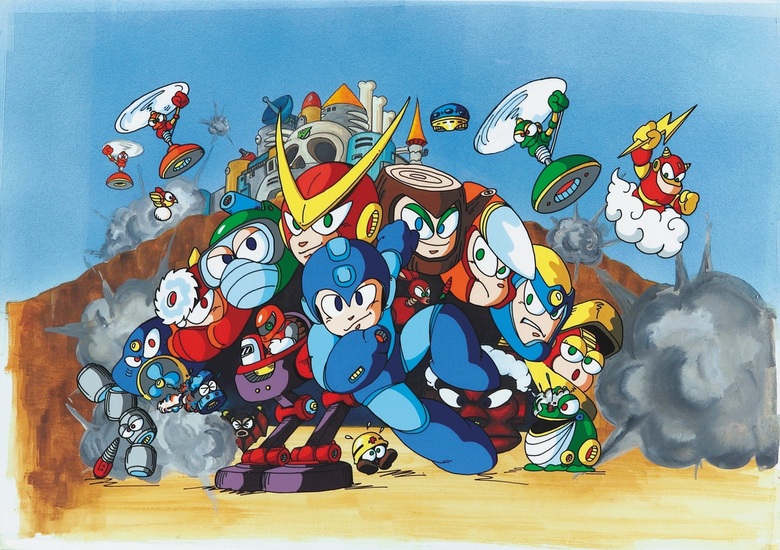

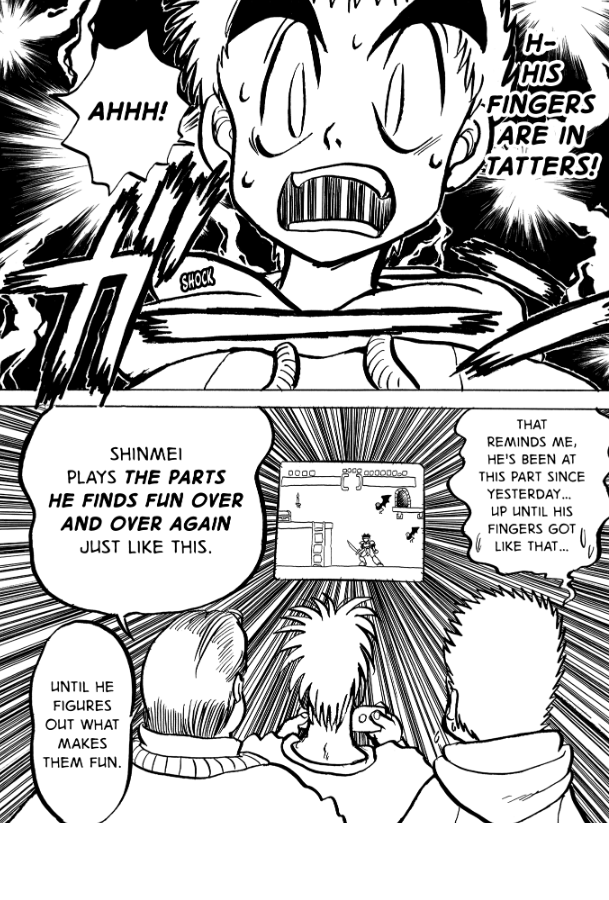
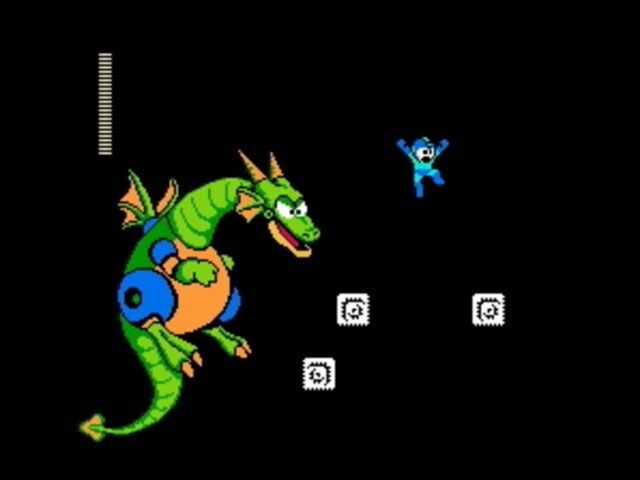
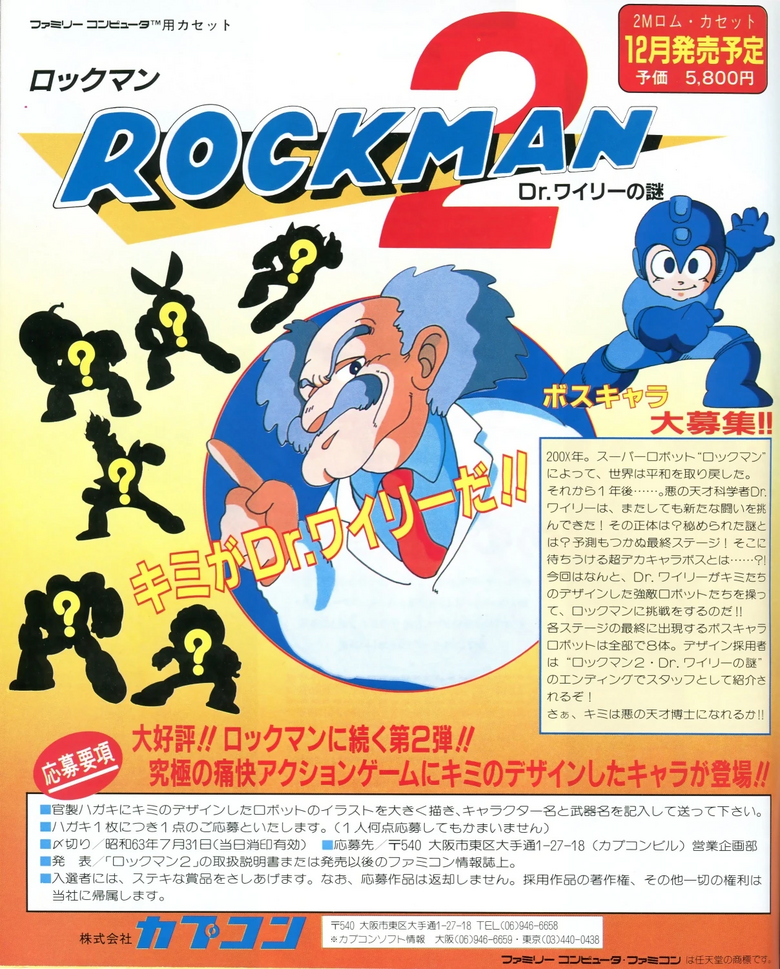
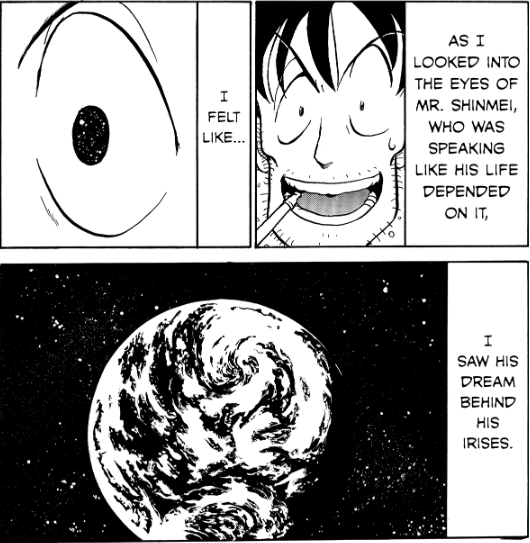
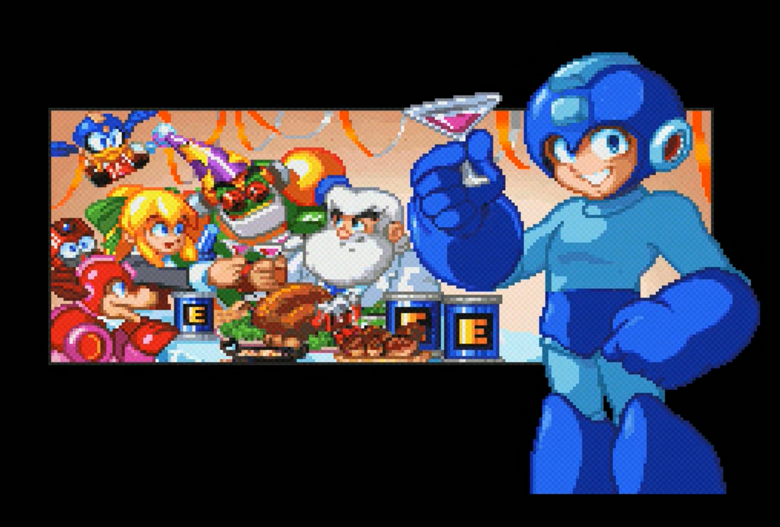
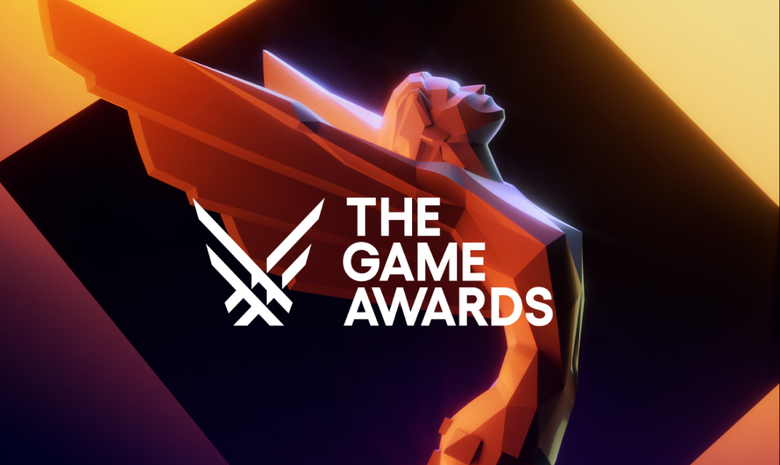
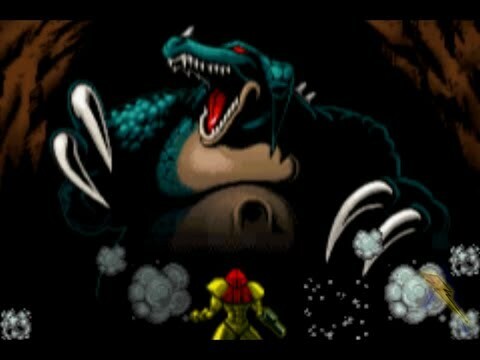
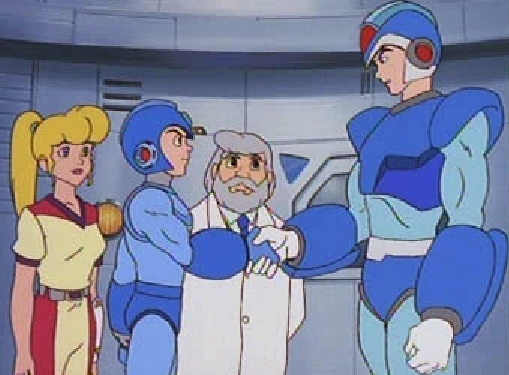
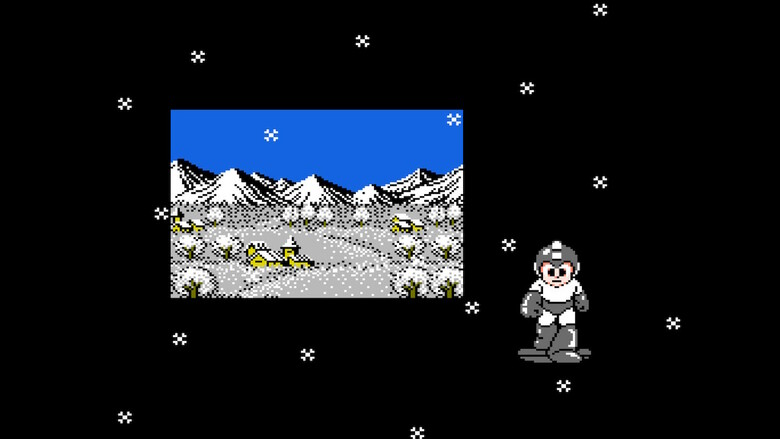
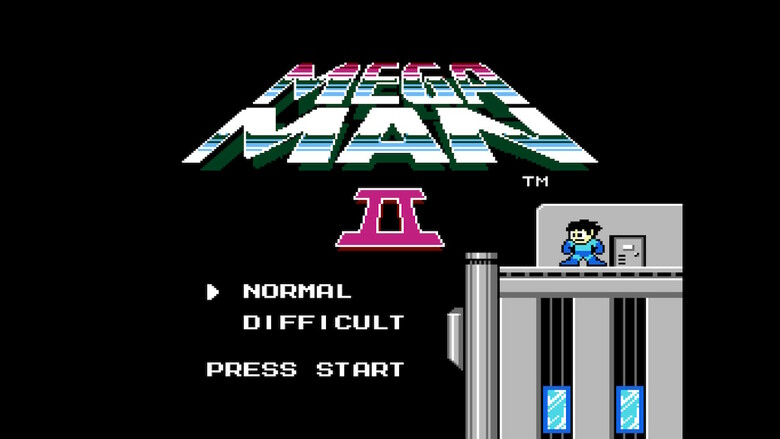
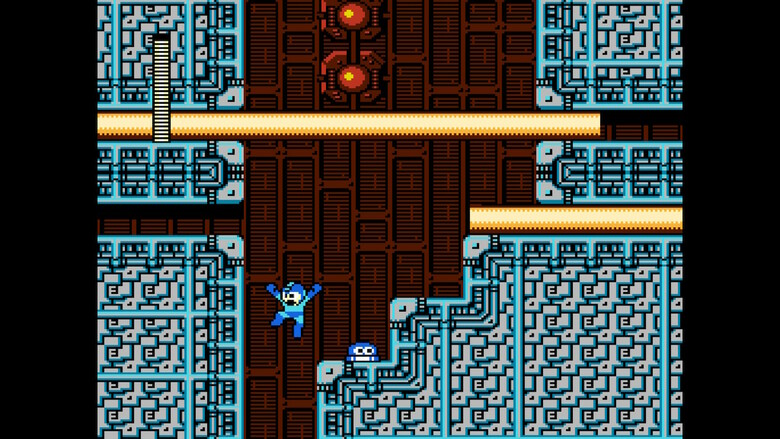

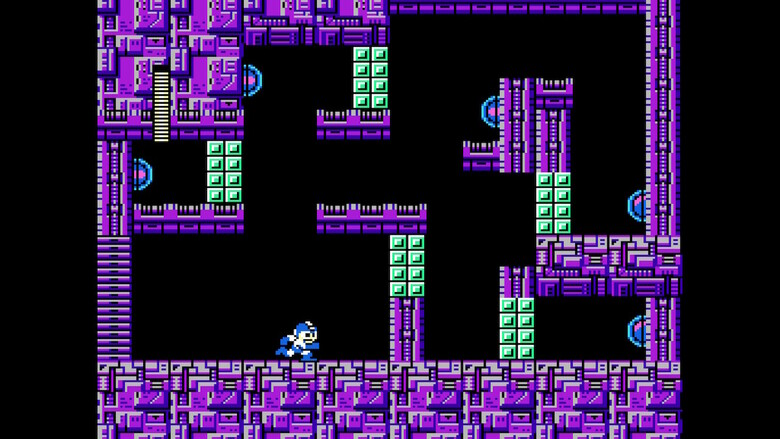
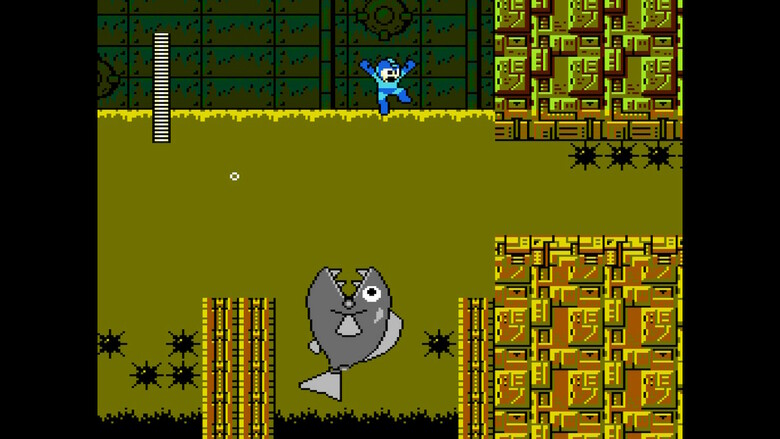
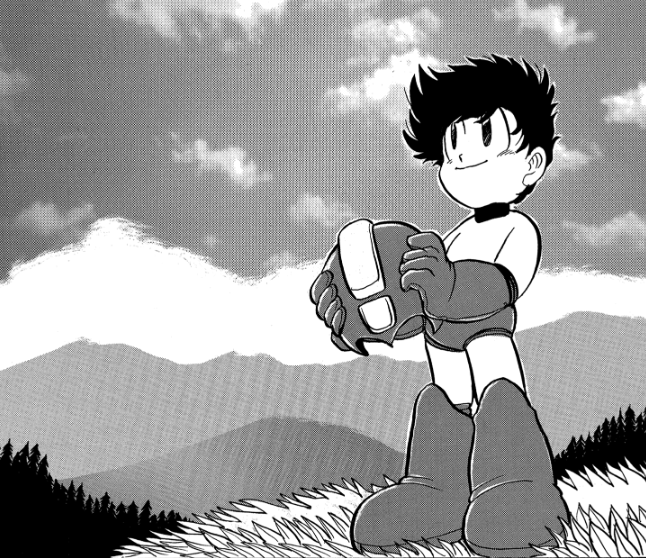
Comments (0)